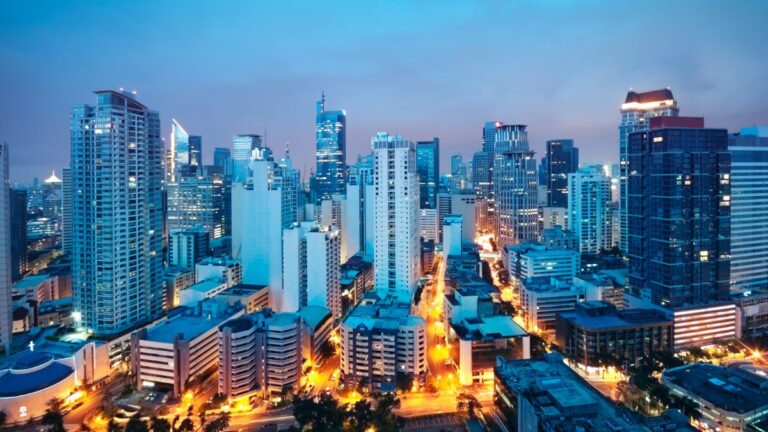Cash or Card: Navigating Currency in the Philippines

As participants in Amazon Associates and other programs, we earn from qualifying purchases. This comes at no additional cost to you. For more details, see our Affiliate Disclosure.
In the Philippines, an archipelago that seamlessly blends tradition with modernity, the choice between cash and card is more than just about convenience—it reflects a deep-rooted cultural dance between the past and the evolving present. Whether you’re a local settling a bill, a business owner catering to diverse clients, or a traveler navigating the markets and malls, understanding how and when to use cash or card can significantly shape your experience in this vibrant nation.
HIGHLIGHTS
- Cash is the more practical choice in the Philippines, especially outside major cities.
- While urbanized areas accept cards, daily transactions in local markets, small eateries, and provincial regions typically require cash.
- Travelers are recommended to use a blend of cash for daily needs and a card for larger purchases or emergencies.
- Awareness of potential hidden charges with cards can ensure uninterrupted financial transactions in the country.
The Cash Culture: Understanding the Philippine Peso’s Dominance
In the heart of the Philippines, the tactile allure of cash remains a powerful force. The Philippine Peso, with its iconic heroes and rich history imprinted on every bill, is not just a currency – it’s an emblem of national pride and a testament to the country’s spirited past. For many Filipinos, cash transactions represent trust, immediacy, and a tangible connection to the local economy.
Historically, the Philippines has been a largely cash-driven society. From local sari-sari stores to bustling wet markets, cash transactions have been the norm. The reasons behind this dominance are multifaceted. Infrastructure challenges, particularly in more remote regions, mean that electronic transaction systems are not always feasible. Additionally, a significant percentage of the population remains unbanked, relying solely on cash for their day-to-day activities.
Local customs and practices also feed into this preference. Bargaining, a common practice in many local markets, is typically more straightforward with cash. Also, many Filipinos still lean on the “tingi-tingi” or “retail” system where goods are sold in smaller, more affordable quantities, making cash transactions more convenient.
However, as the Philippines undergoes a digital transformation, the dominance of the peso is being gently challenged. But for now, understanding and respecting the cash culture is crucial for anyone looking to truly connect with the Filipino way of life.
Digital Shift: The Rise of Card Payments and Online Transactions
The Philippines, while rooted in its rich traditions, is not immune to the global wave of digital transformation. Over the past few years, the country has seen an exponential rise in card payments and online transactions, reflecting a shift in how Filipinos manage and spend their money. This shift can be attributed to several factors, painting a picture of a nation embracing change while keeping one foot firmly planted in its customs.
The younger generation, tech-savvy and globally connected, has played a pivotal role in driving this digital momentum. With increasing exposure to global trends and technological advancements, many young Filipinos are becoming ambassadors of change, advocating for the convenience and efficiency of digital payments.
Infrastructure developments, especially in urban areas, have also paved the way. The proliferation of shopping malls, international franchises, and e-commerce platforms have made card payments more accessible and, in many cases, more desirable. These establishments often offer incentives such as loyalty points, discounts, and cashback rewards for card or online payments, further promoting the digital shift.
The emergence of local fintech companies has bridged the gap for the unbanked population. E-wallets and mobile money platforms, such as GCash and PayMaya, provide digital solutions that don’t necessarily require traditional banking infrastructure. These platforms have become popular for both online shopping and peer-to-peer transfers.
However, with this rise in digital transactions comes the responsibility of ensuring cybersecurity and educating the masses about potential online fraud risks. As the Philippines journeys through this digital frontier, it’s essential to strike a balance between embracing new methods and safeguarding the trust and security of its citizens.
Hidden Charges and Fees: What to Watch Out For
When navigating the financial landscape of the Philippines, whether as a local or a visitor, understanding the various charges and fees associated with transactions can make all the difference in your spending experience. While the allure of digital convenience or the traditional charm of cash might draw you in, it’s essential to be vigilant about potential hidden costs that could catch you off guard.
- ATM Withdrawal Fees: For travelers using foreign bank cards, the fees for ATM withdrawals can be steep. Furthermore, many ATMs have withdrawal limits, meaning multiple transactions (and fees) might be necessary to access larger sums of money. It’s always advisable to check with your home bank regarding international fees before traveling.
- Currency Conversion Fees: When using credit or debit cards from international banks, there might be charges for currency conversion. These fees can vary greatly between banks and can significantly increase the cost of purchases if not monitored.
- Service Charges in Restaurants and Hotels: While tipping is not obligatory in the Philippines, some establishments add a service charge (usually 10%) to the bill. It’s essential to check your bill to avoid tipping twice.
- E-Wallet Transaction Fees: While e-wallets like GCash and PayMaya offer incredible convenience, certain transactions, such as cashing out or transferring to a bank, may come with associated fees.
- Card Maintenance Fees: Some local banks charge annual fees for maintaining credit cards. While these are not exactly “hidden,” they can be a surprise for those who don’t routinely check their statements or who might be used to fee-free cards from other countries.
- Merchant Imposed Fees: In certain establishments, especially in less urbanized areas, merchants may impose additional charges for card payments, usually to offset the service fees charged by card providers. It’s always a good practice to inquire before finalizing a purchase.
Knowledge is power when it comes to handling money, especially in unfamiliar terrain. By being aware of potential hidden charges and asking the right questions, one can navigate the Philippines’ financial scene with confidence and ease.
Is It Better To Use Card Or Cash In The Philippines?
While many urbanized areas, malls, and upscale establishments accept cards, a significant portion of the country, especially outside major cities, still operates predominantly on cash.
Daily transactions at local markets, small eateries, public transport, and in provincial areas typically require cash. Moreover, not every establishment that accepts cards will accept all types of cards, leading to potential inconveniences.
Having Philippine Pesos on hand ensures uninterrupted access to goods and services, especially in less urbanized or remote areas where ATMs and card facilities may be sparse.
In summary, for the broadest flexibility and convenience during your stay, cash is the more practical choice in the Philippines.
Tips for Travelers: Safely Navigating Currency Choices
Navigating a foreign country’s financial landscape can be daunting, but with a few precautions and some local know-how, you can confidently handle your finances in the Philippines.
- Diversify Your Options: While cash is essential, it’s also wise to carry a reliable credit or debit card for larger purchases or emergencies. This blended approach ensures you’re ready for various scenarios.
- Use ATMs Wisely: Opt for ATMs in well-lit areas, preferably inside malls or near bank branches. This minimizes the risk of card skimming. Always shield your PIN and check for any unusual devices attached to the ATM.
- Limit Large Cash Amounts: When heading out, carry only what you’ll need for the day. Keep larger amounts and backup cards in a hotel safe or secure location.
- Inform Your Bank: Before traveling, notify your bank of your travel dates and destination. This prevents them from flagging your foreign transactions as suspicious and blocking your card.
- Beware of Hidden Fees: Especially with card transactions, be aware of currency conversion fees. If given the choice, opt to be billed in the local currency (Philippine Peso) rather than your home currency.
- Check Change: When using cash, always count your change. Mistakes can happen, and it’s essential to ensure you’re given the correct amount back.
- Keep Digital Backups: Take photos or scans of your important financial documents, such as cards, passport, and IDs. Store them securely in a cloud service or encrypted on your device. This can be a lifesaver if you lose the originals.
- Stay Updated: Currency exchange rates can fluctuate. Use trusted currency conversion apps or websites to stay informed about current rates.
- Negotiate with Care: Bargaining is common in local markets. However, always do so with respect and a smile. Being informed about average prices helps you bargain effectively.
- Stay Alert to Scams: Just like anywhere, be cautious of overly aggressive sellers or unsolicited offers to exchange currency. Trust your instincts and avoid deals that seem too good to be true.
Armed with these tips and a dash of common sense, travelers can safely and confidently navigate their currency choices in the Philippines.






